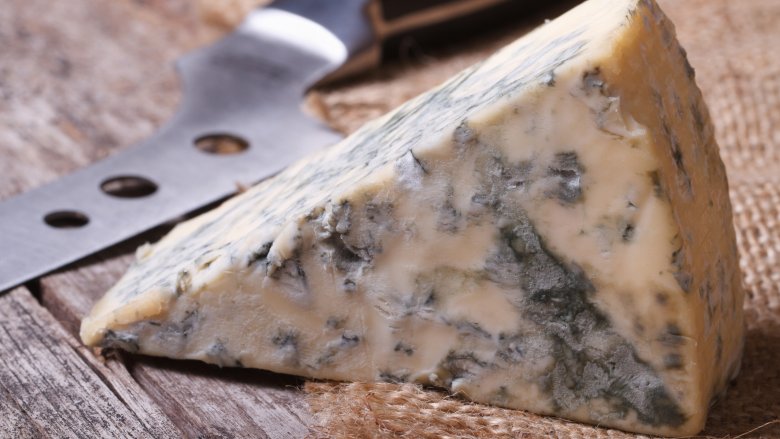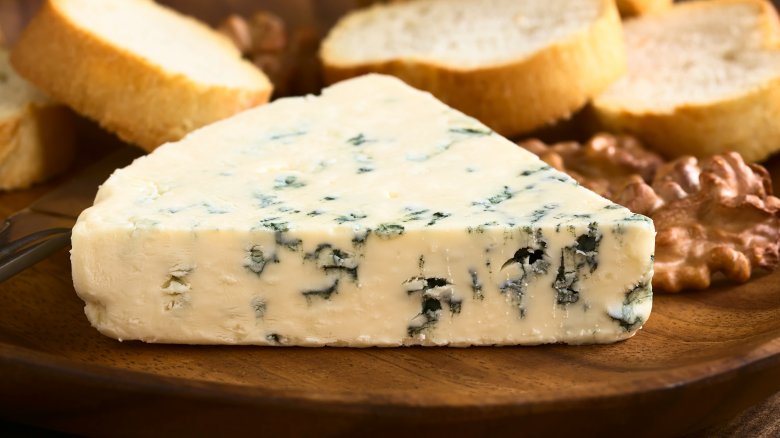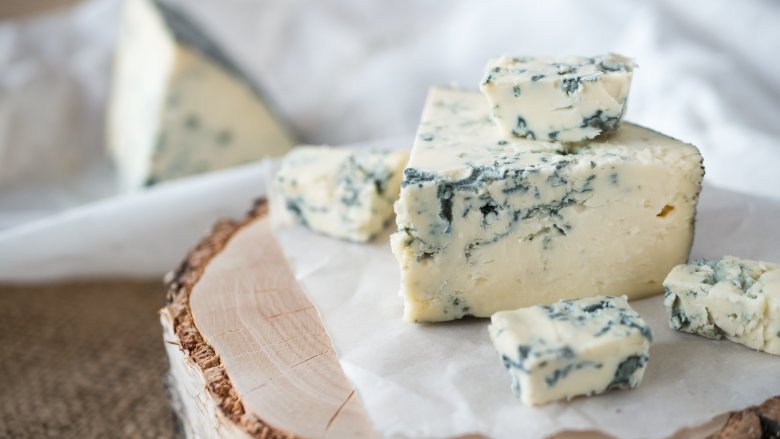The Reason It's Safe To Eat Moldy Blue Cheese
Most people prefer not to eat moldy food. Not just because it can be rather unappetizing, as it signals food spoilage, but it can lead to dangerous health issues too (via Healthline). One major exception to this rule is in regards to blue cheese where mold isn't seen as a bad thing — and it can even be beneficial. Here's why a little mold won't sentence your blue cheese to a sad fate in the garbage can.
Mold in your blue cheese isn't a cause for alarm because of the type of mold it is. Known as Penicillium roqueforti and Penicillium glaucum, these molds are essential to making blue cheese and actually have anti-bacterial properties as well (via Food & Wine). If their names sound familiar, that's because their spores are in the same family as what is used to make the life-saving medicine penicillin.
How mold works to create blue cheese
As for how Penicillium molds can give us delicious, creamy blue cheese, they work a special kind of magic when they come into contact with cheese. First, they accelerate the breakdown of the proteins and fats in the cheese by producing enzymes that release amino acids. This wonderful chemical reaction within the cheese is part of what produces its unique texture, look, and that distinct tangy flavor we all love. The areas with the most amino acid activity can easily be spotted in blue cheese as they're found in the cheese's green and blue veins. According to Cheese Science, these enzymes also result in changes within the cheese known as lipolysis, a creation of free fatty acids in the blue cheese that help contribute to its wonderful taste and pungent aroma.
How to tell if your blue cheese is bad
None of this means that your blue cheese is immune to spoiling, though. If you take it out of the fridge and notice that it's begun to develop fuzzy gray or black splotches of mold or is showing pink and yellow yeast spots, then it's time to ditch it (via Mental Floss). If it has a slimy texture, that could also be an indication that it's on its way out. Here's the thing with blue cheese, though — really good blue cheese is pungent and its smell may even remind you of ammonia, so applying the smell test here could be tricky.
Now that you know why the mold in blue cheese isn't cause for concern, go ahead and break out the crackers and wine.


